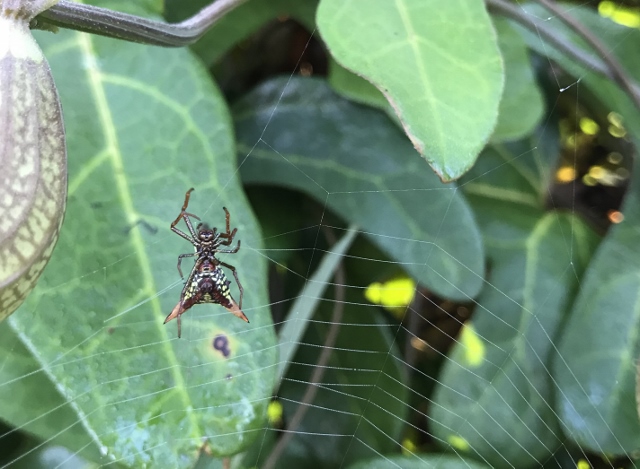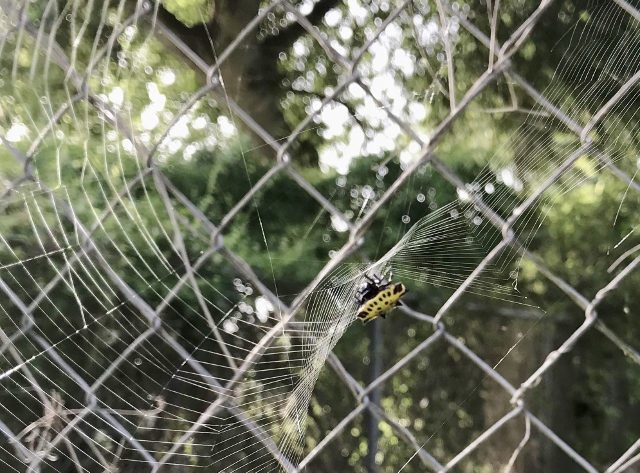Story and photos by Anita Westervelt, Texas Master Naturalist

There’s nothing quite as mystical as a crisp, heavy-dewed morning at first light. Fences, shrubs, trees and anything that didn’t move during the night are shrouded in artfully constructed spider webs that glint and dazzle in the sun.
Spiders are not insects. They are called arachnids because they belong to the class of animals called Arachnida. Spiders have two body parts, eight legs and no antennae. Most spiders have eight eyes; some as many as 12. Spiders are invertebrates; they don’t have bones; they have an exoskeleton.

There are 45,000 known species of spiders worldwide. Likely, there are more than a thousand species within Texas and most can be found in South Texas.
There are two kinds of spiders, based on hunting styles: those that trap and those that hunt.
It’s the trappers that build the webs, like orb weavers, a common group of spiders often found in Valley gardens. Orb weavers are of many different shapes, colors and sizes. Their markings vary from stripes, blotches and circles in colors ranging from creamy white, lime green and chocolate brown to primary colors of red, green and yellow. Some orb weavers are triangular in shape with humps, bumps, spikes and angles; others have distended round abdomens that seem to have been inflated like a balloon.
Orb weavers are members of the spider family Araneidae. More than 3,500 species of orb weavers have been identified throughout the world, and nearly 200 species are found in North America.

Spiders are important worldwide. They help maintain the insect population at a reasonable number; they catch and eat insects, including crop-destroying insects in the field. Orb weavers eat twice their weight a day in aphids, ants, leafhoppers, leaf miners, grasshoppers, flies, beetles, moths, caterpillars, mosquitoes and wasps as well as other flying insects.
Many orb weavers take apart their web each morning by eating the silk threads and then reconstruct the web at night. The silk is made of protein and is recycled in the spider’s digestive system, replenishing the protein and aiding the spider to make a new web.
During the fall, orb weavers lay their last clutch of eggs. Both male and female spiders most likely die soon after mating. Those last-clutch eggs will hatch within a couple of weeks but remain inside the egg sac until warmer weather returns in early spring.
Orb weavers are docile, non-aggressive and usually flee at the first hint of danger. They are harmless to humans and pets. However, once an insect is trapped in the web, the spider will bite the prey, wrap it in silk, wait for it to die and then begin to eat.

The web itself is considered an engineering feat. Initially, the spider floats a line of silk on the wind to another surface thereby establishing a bridge. The spider then uses its own weight and the elastic properties of the silk to establish an initial silk triangle. The web is completed with a series of concentric circles radiating from the center.
